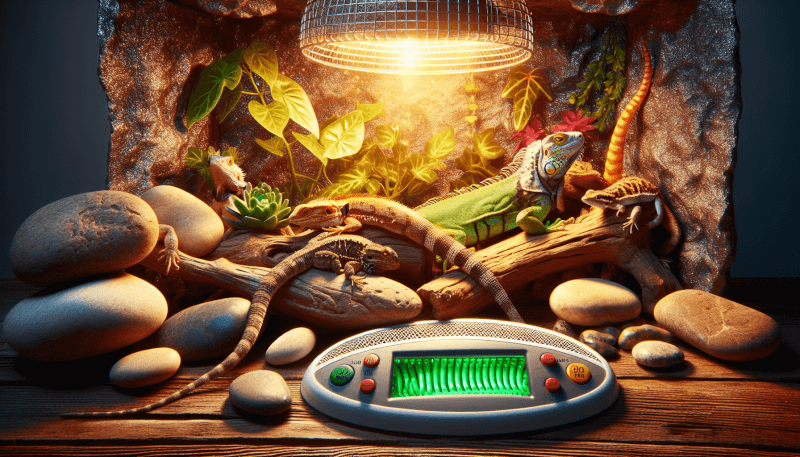Are you a proud reptile owner? If so, ensuring that your scaly friend is receiving the proper heat is vital for their overall health and well-being. In this article, we will explore the essential steps you can take to provide your reptile with the ideal heat conditions. From choosing the right heat source to setting up the perfect temperature gradient, you will be equipped with the knowledge to create a comfortable and thriving environment for your beloved reptile companion. So, let’s dive in and discover the secrets to providing proper heat for your reptile!
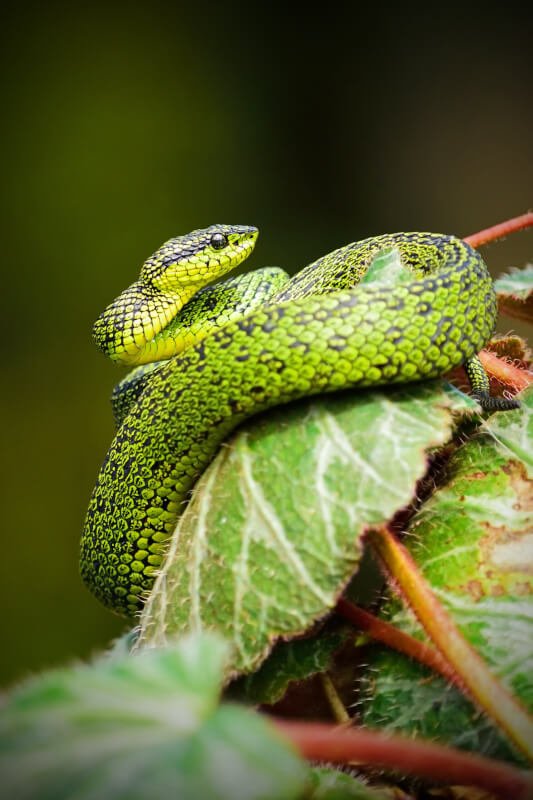
Why Heat is Important for Reptiles
Reptiles are ectothermic animals, which means they rely on external sources of heat to regulate their body temperature. Unlike mammals, who can generate their own body heat, reptiles need to obtain heat from their environment. Heat is vital for reptiles as it affects their metabolism and overall health. Without proper heat, reptiles may struggle with digestion, immune function, and activity levels.
Reptile metabolism and heat
Reptiles have a lower metabolic rate compared to mammals, which means they require less energy to sustain themselves. Heat plays a crucial role in reptile metabolism, as it directly impacts their ability to digest food, absorb nutrients, and perform necessary bodily functions. The digestive enzymes in reptiles work optimally at specific temperatures, and a lack of appropriate heat can lead to poor digestion and nutrient absorption.
The importance of a proper heat gradient
Creating a proper heat gradient within the reptile enclosure is crucial for the well-being of your pet. A heat gradient refers to the variation in temperature within the enclosure, allowing the reptile to choose its preferred temperature based on its needs. Reptiles regulate their body temperature by moving between warmer and cooler areas, known as thermoregulation. This behavior is essential for maintaining overall health, digestion, and immune function.
Choosing the Right Heating Equipment
When it comes to providing adequate heat for reptiles, it is crucial to select the right heating equipment. Various types of heating devices are available on the market, each with their unique benefits and considerations. Understanding the different options and factors to consider will help you make an informed decision for your reptile’s well-being.
Understanding the different types of heating equipment
Heat Lamps: Heat lamps emit infrared radiation and are suitable for diurnal reptiles that require a heat source from above. These lamps can provide both heat and light, simulating natural sunlight.
Under-Tank Heating: This method involves placing heating elements beneath the reptile enclosure, such as heat mats or tapes. Under-tank heating is ideal for nocturnal reptiles who prefer belly heat. It mimics the warmth radiating from the ground.
Ceramic Heat Emitters: Ceramic heat emitters produce heat without emitting light. They are a great option for providing supplemental heat, especially at night, without disturbing the reptile’s natural day and night cycle.
Factors to consider when selecting a heating device
When choosing a heating device, several factors need to be considered:
Reptile Species: Different reptile species have varying temperature requirements. Research and understand the specific needs of your reptile to choose the appropriate heating equipment.
Enclosure Size: Consider the size of the enclosure and the heating device’s wattage to ensure it can adequately heat the space without causing overheating or underheating.
Safety Considerations: Ensure that the heating equipment is safe and suitable for use with reptiles. Avoid devices that may emit harmful UVB or UVC radiation, which can be damaging to reptiles.
Safety considerations for reptile heating equipment
Prioritizing the safety of your reptile is crucial when selecting and using heating equipment. Here are some essential safety considerations:
Use Thermostats: Use thermostats with your heating equipment to regulate and maintain a consistent temperature. This will prevent overheating and ensure the reptile’s safety.
Avoid Overcrowding: Ensure that the heating equipment and reptile enclosure are not overcrowded, as this can lead to dangerous temperatures and inadequate heat distribution.
Regular Inspection and Maintenance: Regularly inspect your heating devices for any signs of damage or malfunction. Clean them regularly to prevent dust or debris buildup, which can affect their performance and safety.
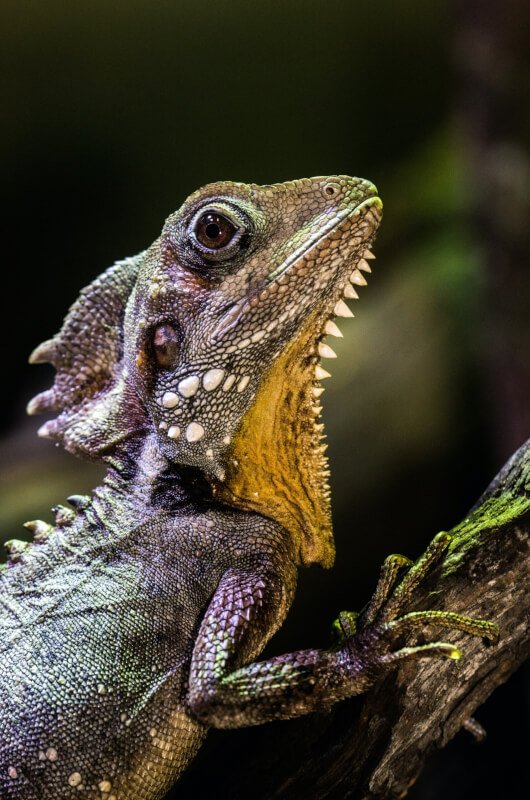
Setting Up the Heating System
Properly setting up the heating system is vital to create a comfortable and safe environment for your reptile. Follow these steps to ensure optimal heat distribution and the creation of a suitable heat gradient.
Creating a heat gradient in the enclosure
To establish a heat gradient, you need to provide different temperature zones within the reptile enclosure. This can be achieved using a combination of heating equipment, such as heat lamps, heat mats, or ceramic heat emitters. Place the primary heat source at one end of the enclosure and a cooler area at the other end. This allows the reptile to move freely and choose the temperature that suits its needs.
Finding the optimal temperature range for your reptile
Research and understand the specific temperature requirements of your reptile species. Each species has its preferred temperature range, and providing the appropriate conditions is essential for their well-being. Consult reliable sources, such as reptile care guides or veterinarians, to determine the optimal temperatures your reptile requires.
Placement and positioning of heating equipment
Ensure proper placement and positioning of heating equipment to maximize heat distribution and effectiveness. Position heat lamps above basking spots, ensuring they are securely mounted to prevent accidental falls. Place heat mats or tapes beneath the enclosure, providing enough coverage to accommodate the reptile’s size and allow them to choose their preferred area of warmth.
Monitoring and Adjusting the Temperature
Maintaining the correct temperature in the reptile enclosure is an ongoing process that requires regular monitoring and adjustment. Monitoring temperature and humidity levels is crucial to ensure your reptile’s well-being and detect any potential issues.
Using thermometers and hygrometers to monitor temperature and humidity
Invest in reliable thermometers and hygrometers to accurately measure temperature and humidity levels within the enclosure. Place these devices in different areas to get an overall understanding of temperature variations. Regularly check and record the readings to monitor trends and make adjustments as necessary.
Common temperature-related problems and solutions
It’s essential to be aware of common temperature-related problems and their corresponding solutions. Some potential issues include:
Overheating: If the enclosure becomes too hot, it can lead to stress, dehydration, or even heatstroke in reptiles. Reduce temperature by adjusting the heat source, using lower wattage bulbs, or ensuring proper ventilation.
Underheating: Reptiles that are kept in temperatures below their preferred range may become sluggish, lose appetite, or experience difficulty digesting food. Increase temperature by adjusting the heat source or using higher wattage bulbs to provide adequate warmth.
Making necessary adjustments to maintain the correct temperature
Regularly monitor and assess temperature levels within the enclosure to identify any inconsistencies. Adjust the heating equipment accordingly based on your observations and the reptile’s behavior. Fine-tuning the temperature settings will ensure your reptile remains comfortable and healthy.
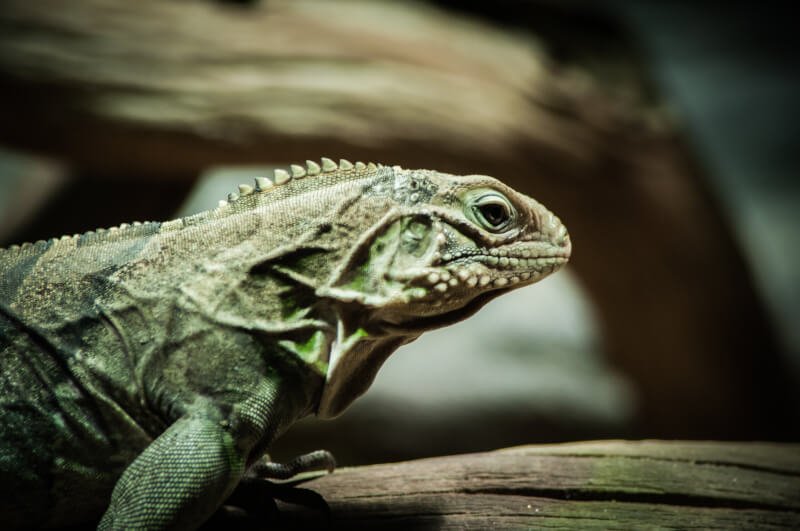
Heating Methods for Specific Reptiles
Different reptiles have varying heat requirements, depending on their natural habitat and behavior. Here are some common heating methods based on specific reptile needs:
Heat lamps for diurnal reptiles
Diurnal reptiles, such as bearded dragons or leopard geckos, require both heat and light. Heat lamps provide a suitable heat source from above, mimicking the warmth of the sun. Ensure the heat lamp is positioned correctly and securely, creating a basking spot that reaches the desired temperature range.
Under-tank heating for nocturnal reptiles
Nocturnal reptiles, like crested geckos or corn snakes, prefer belly heat. Under-tank heating, using heat mats or tapes, is an ideal method to provide the necessary warmth. Position the heating element beneath one end of the enclosure to create a temperature gradient, allowing the reptile to choose its preferred temperature.
Basking spots for reptiles that require high temperatures
Reptiles that require higher temperatures, such as ball pythons or certain chameleons, benefit from having designated basking spots within their enclosure. Use heat lamps or ceramic heat emitters to create a localized heat source. Position the basking spot near the primary heat source, ensuring it reaches the required temperature for the reptile’s comfort.
Heat mats for ground-dwelling reptiles
Ground-dwelling reptiles, including tortoises or certain skinks, benefit from heat mats placed beneath their enclosure. These mats provide consistent, gentle heat and simulate the warmth radiating from the ground. Ensure the heat mat covers a sufficient area to accommodate the reptile’s size and activity level.
Understanding Temperature Requirements for Different Reptiles
Each species of reptile has specific temperature requirements based on their natural habitat, climate, and physiological needs. Understanding and meeting these temperature requirements is crucial for your reptile’s overall health and well-being.
Researching the specific temperature needs of your reptile species
Thoroughly research the specific temperature needs of your reptile species to provide the optimal environment. Reliable resources, such as reputable reptile care guides, herpetological societies, or veterinary professionals, can provide accurate information on the required temperature ranges.
Climate and habitat considerations
Consider the natural habitat and climate of your reptile species to replicate their preferred conditions closely. For reptiles from tropical regions, higher temperatures and humidity levels may be necessary. Desert-dwelling reptiles may require lower humidity and higher temperatures during the day, with cooler nighttime temperatures.
Temperature requirements related to age and health
It’s important to note that temperature requirements can vary based on the reptile’s age and health. Younger reptiles may require slightly higher temperatures to support their growth and metabolic needs. Reptiles recovering from illness or injury may also benefit from slightly higher temperatures to aid in their healing process. Consult with a reptile veterinarian for specific temperature recommendations based on your reptile’s unique circumstances.

Supplemental Heat Sources
In addition to the primary heating equipment, there are supplemental heat sources that can enhance your reptile’s comfort and well-being.
Using ceramic heat emitters as a nighttime heat source
Ceramic heat emitters are an excellent option for providing heat during the night or maintaining a consistent temperature when additional warmth is needed. These devices emit heat without producing light, ensuring your reptile’s natural day and night cycle is not disrupted.
Heat rocks and pads for providing localized warmth
Heat rocks and pads can be used to provide localized warmth within the enclosure. However, caution must be exercised when using these devices to prevent burns or overheating. It’s essential to monitor the reptile’s behavior and temperature regulation to ensure their safety.
Heat tape for racks and breeding setups
Heat tape is often used in rack systems or breeding setups to maintain consistent temperatures for multiple reptiles. It offers a convenient way to distribute heat and monitor temperature in these specific setups. Regularly check the temperature to ensure it remains within the desired range and make adjustments as necessary.
Common Mistakes to Avoid
When it comes to providing heat for your reptile, there are common mistakes that should be avoided to ensure the reptile’s safety and well-being.
Overheating or underheating the enclosure
Avoid subjecting your reptile to extreme temperatures by properly monitoring and adjusting the heating equipment. Overheating can lead to stress, dehydration, or heatstroke, while underheating can result in poor digestion and a weakened immune system. Regularly check the temperature and make adjustments to maintain the correct range.
Using incorrect wattage or size of heating equipment
Using heating equipment with incorrect wattage or size can lead to inadequate heat distribution or overheating. Ensure the equipment you choose is suitable for your reptile’s enclosure size and temperature requirements. Refer to manufacturer guidelines and consult reputable sources for proper equipment selection.
Neglecting to create a temperature gradient
Failing to create a temperature gradient within the enclosure can deprive your reptile of the opportunity to thermoregulate effectively. Always provide a range of temperatures within the enclosure so that your reptile can move between warmer and cooler areas to meet its specific needs.
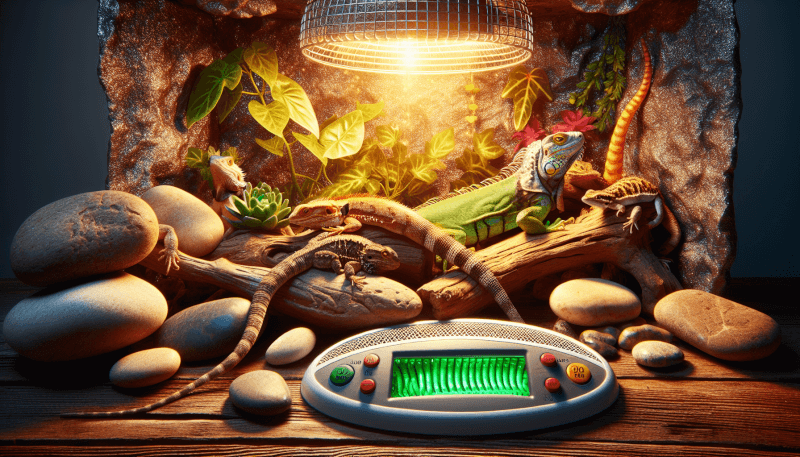
Safety Precautions for Reptile Heating
Reptile heating requires careful consideration and implementation of safety precautions to ensure your pet’s well-being and prevent any accidents or harm.
Avoiding burns and injuries to the reptile
Always prioritize the safety of your reptile by taking measures to prevent burns or injuries. Position heating equipment securely and out of reach of the reptile to avoid accidental contact. Use appropriate heat guards or barriers to ensure the reptile cannot come into direct contact with heating elements.
Preventing electrical hazards
Taking precautions to prevent electrical hazards is crucial to ensure the safety of both you and your reptile. Use grounded outlets and power strips, and avoid overloading electrical circuits. Regularly inspect cords, plugs, and electrical connections for any signs of wear or damage.
Regular inspection and maintenance of heating equipment
Perform regular inspections and maintenance of your heating equipment to ensure proper functioning and safety. Clean the equipment to minimize dust accumulation, which can affect performance and increase fire risks. Replace any damaged or malfunctioning equipment promptly to prevent potential hazards.
Conclusion
Providing proper heat for your reptile is essential for their health, well-being, and overall quality of life. Understanding the temperature requirements of your reptile species, selecting the appropriate heating equipment, and ensuring a suitable heat gradient within the enclosure are all crucial steps in creating the optimal environment for your reptile. Regularly monitoring and adjusting the temperature, while also following safety precautions, will help ensure a comfortable and safe habitat for your beloved reptile companion.

